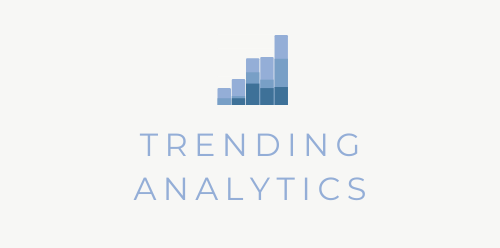Episode 30: 3 Myths about Data Presentations
In this short episode I debunk 3 myths about data presentations.
You can also listen on Apple Podcasts, Google Podcasts, and Spotify.
Get in Touch with Hana
Let me know what you think of the episode, you can
message at hana@trending-analytics.com or on Instagram @hanalytx.
If you are looking for podcast updates and want additional tips on how to visualize and present data sent straight to your inbox, then make sure to subscribe to my weekly data letters here.
When you hit that subscribe button, I’ll be sliding into your inbox every Wednesday with an email.
Love the show? Why not leave a review?
If you loved this episode of the Art of Communicating Data Podcast, why not leave a review on Apple Podcasts and Spotify?
It only takes 2 minutes and provides me with invaluable insight as to what the listeners think.
If you enjoyed this episode, check out this episode where a TEDx speaker coach, Ioana Jongsma, shares her tips for data presentations.
Episode Transcript
Generated automatically – there may be some errors.
[00:00:00] Hana: In today’s episode, I’m gonna address three myths about data presentations that I’ve come across in my almost 10 years of working in the data field. The first myth is that your job is to just present the facts and numbers or be as technical and detailed as possible. This myth can mistakenly make you believe that your job is not to tell a story and to just state the numbers.
[00:00:24] you know, because you’re a data professional, you work with numbers, but your actual role as a presenter is to get your audience to understand and care about your insights, as well as to take the recommended actions. So that means you actually need to spell it out to your audience. You may assume that by sounding technical, you will sound like an authority on your subject. Earlier this season. I did an interview with Iana.
[00:00:52] She’s a TEDx speaker, coach, and we talked about this in more detail so you can listen to that episode after this one. If you missed it, just remember that the goal of your presentation. Isn’t to show off, it’s to make sure your target audience understands your presentation and follows your recommendations.
[00:01:11] So try to only provide the necessary and relevant information for your audience to achieve that. Keep in mind that supplemental information can be provided after the presentation for your audience members to review if they desire, not everything has to be addressed in your presentation.
[00:01:28] The second myth is that introverts or shy people can’t deliver great presentations.
[00:01:33] As an introverted and known to be soft spoken data professional, I actually enjoy public speaking. I hear the myth all the time, and I’m mentioning this only to motivate you.
[00:01:43] I have won presentation awards and I do get compliments for my presentation deliveries, so it is possible to be shy or introverted or soft spoken, while also being great in delivering presentations. I do have another episode recommendation for this if you wanna be inspired. I did an interview with Susan Gaura in my previous season, and I’ll link it in the show notes. I really recommend listening to it because she talks about overcoming her nerves and her introvertedness.
[00:02:10] Really rocking her presentations as well. The third myth is that you need a slide deck. Yes. More often than not having a slide deck is appropriate for your presentation, but that’s not always the case. In some contexts, like some conferences, a poster would be expected instead of a slide deck, and in some cases you don’t even need a visual aid.
[00:02:35] It could just be you standing there talking and that can sound really intimidating because that means all eyes are on you. But it can also mean that your audience will be less likely to be distracted with your slides or other visual aids. . You can also do a hybrid approach where you do have slides for portions of your presentation, but then occasionally you turn off your slides or put up a blank one so that all attention is back on you in virtual presentations, you can do this by uns sharing your screen and making sure the conferencing tool is focusing on your camera video, so making sure your camera video takes up the whole screen again. So if you were to only put up a blank screen in a virtual presentation, that black or white slide will still be taking up most of the screen and the attention won’t be back on you fully. So that’s what I recommend for virtual presentations is uns sharing your screen and then having the conferencing tool focus back on your video.
[00:03:31] So these are the three myths about data presentations I wanted to share with you today. If you found this helpful, I’ll be linking the two episodes that are related to this topic in the show notes.
[00:03:41] They’re both guest interviews. One is with Ioana that I did earlier this season, and another one with Susan that I did in the previous season.
